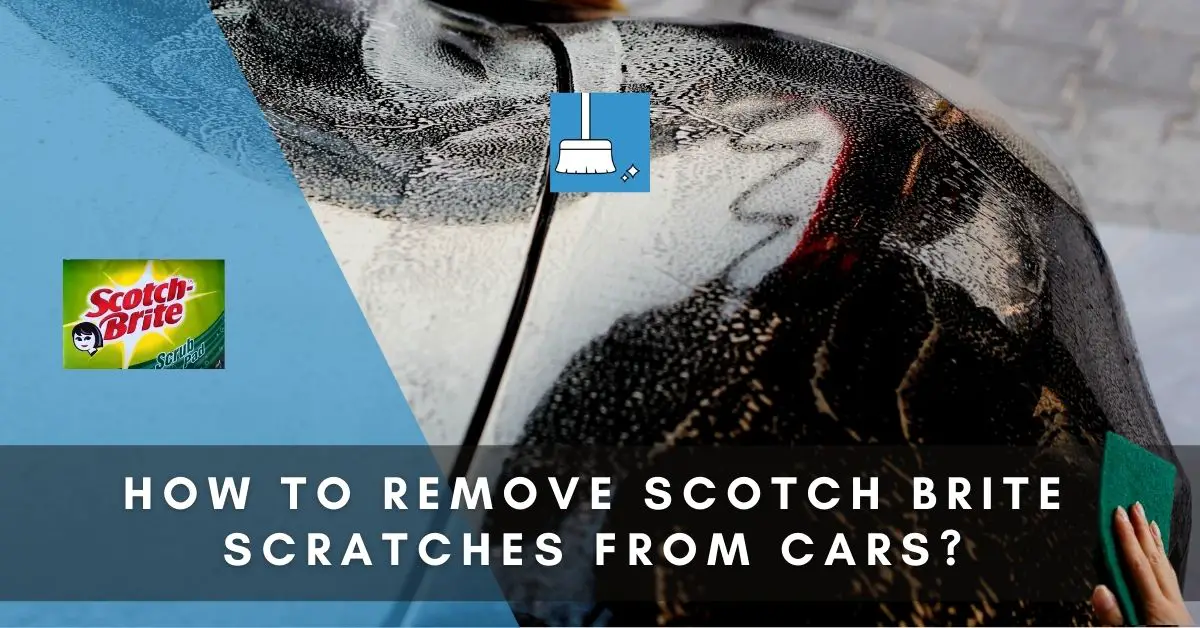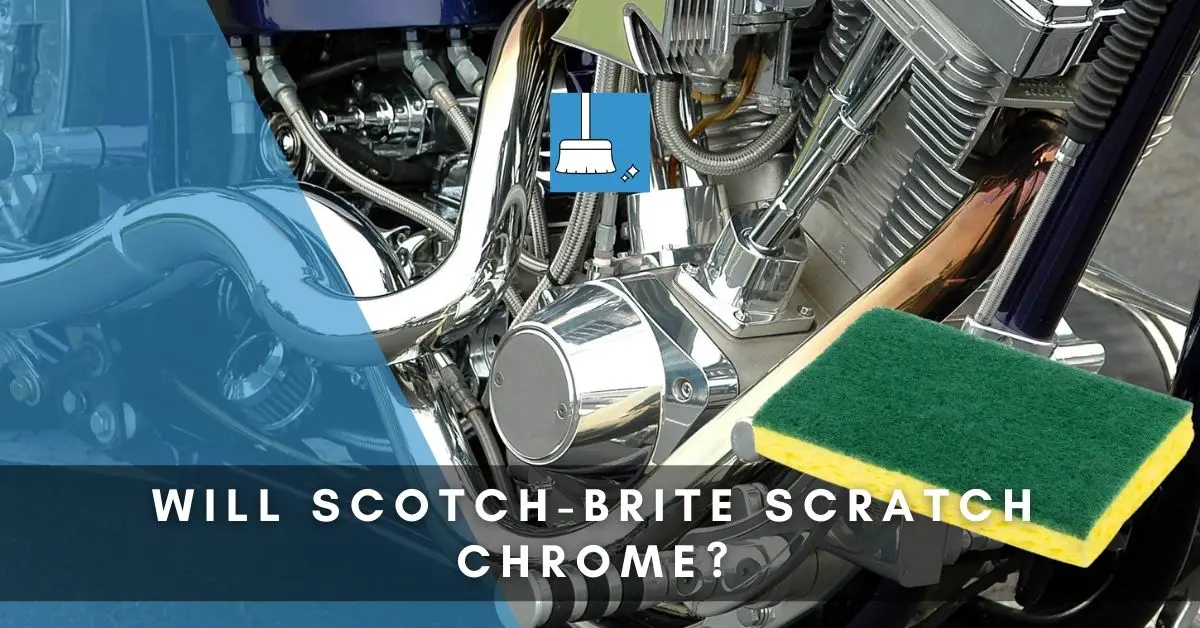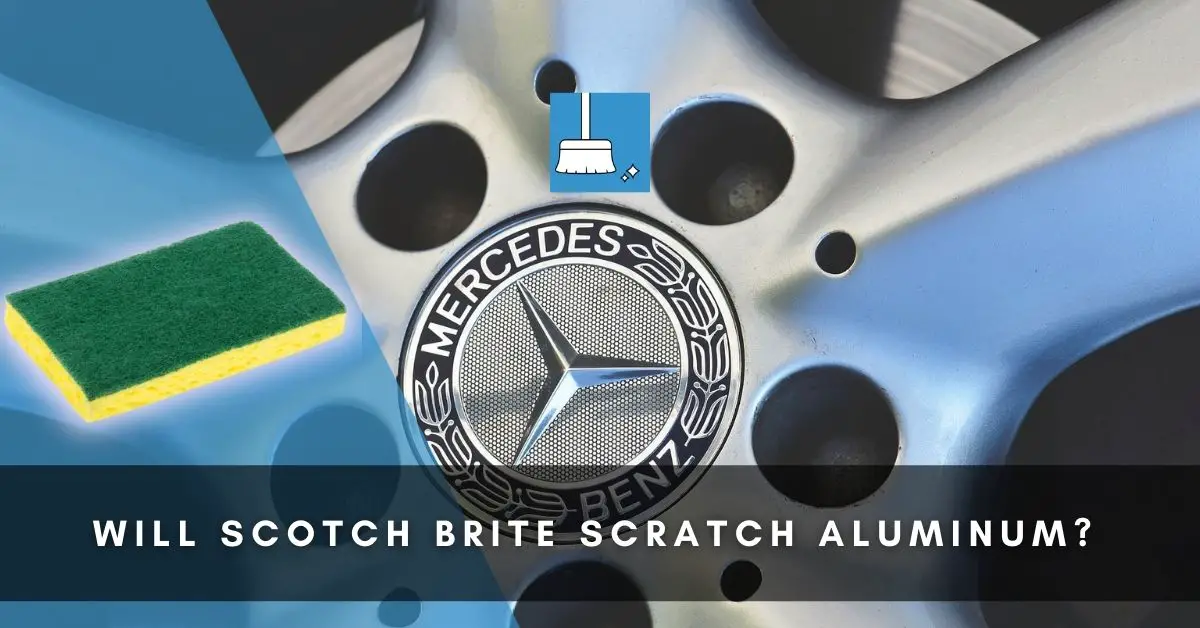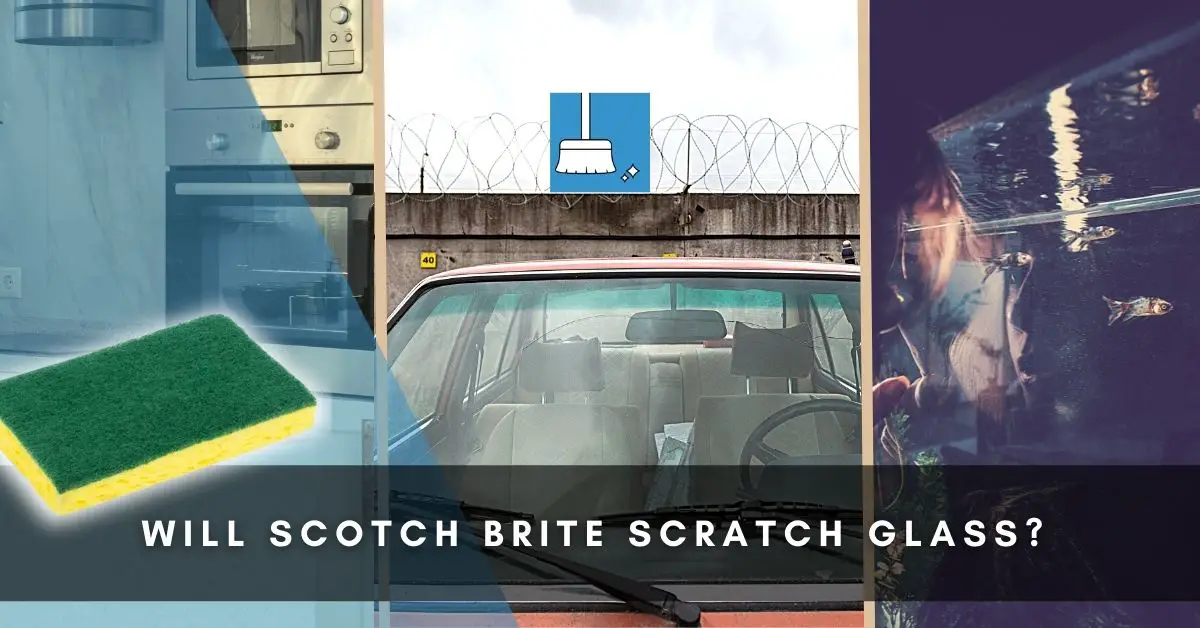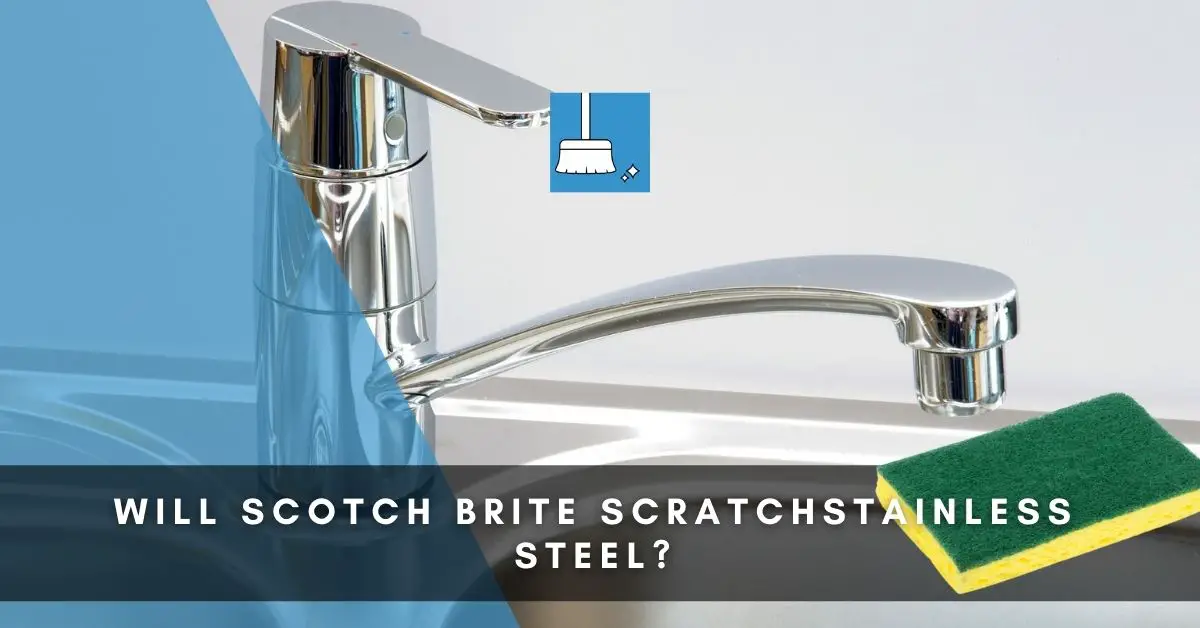While cleaning their cars, many people make the terrible mistake of using a scotch Brite cleaning pad. While it may seem soft, this cleaning tool is very abrasive to the paint finish on cars and causes visible scratches.
The paint of a car is made up of three layers of paint. The primal layer, the base layer, and the clear coat layer (which protects the car and gives it that glossy shine).
The good thing is, clear coat scratches can be removed and we’re going to explain the best ways to remove Scotch Brite scratches from your car.
How to Remove Scotch Brite Scratches from Cars (8 Methods)
Most scratches from a Scotch Brite are not very deep which means the scratch is likely on the clear coat of your car.
Here are different ways to get those scratches out of your car’s body:
Method 1: Use a Car Scratch Remover
Car scratch removers are the quickest and easiest way to remove scotch brite scratches from your car.
These removers work by buffing away a thin layer of your clear coat and smoothing the edge of the scratch in order to make the entire surface even and scratch-free.
There are so many options of car scratch removers on the market to choose from; ranging from rubbing compound to abrasive scratch removal kits.
STEP 1: Ensure to choose a good quality car scratch remover.
STEP 2: Then apply it on a microfiber towel and slowly apply it onto the scratch in circular motions till the scratch disappears.
Method 2: Buff and Wax
Since most scratches from scotch brite are usually not deep scratches, a very easy and cost-efficient option to remove the scratches is to buff the scratch surface and wax it.
STEP 1: Upon examination, if the scratch is not deep then buffing the area with buffing compound and buffing pads will restore the scratched surface.
STEP 2: After buffing, applying a long-lasting synthetic paste car wax will restore the shiny look on the surface.
This buffing and waxing routine is also a great car maintenance routine to incorporate regularly in order to maintain the paint and shine of your car.
Method 3: Machine Polishing
As a more professional method of removing scratches from your car, machine polishing is perfect for removing defects and scratches from abrasive materials like scotch brite. When you use a car polishing machine, you get a clean removal of the imperfections and scratches.
STEP 1: This process starts with making sure to clean the car to remove any dirt or possible contaminants.
STEP 2: Next, separate the specific area that you want to polish with tape. Then apply a few drops of a good polishing compound on a polishing pad and attach the pad to a polishing machine. Using the machine, apply the polishing compound to the scratch surface in a thin layer.
STEP 3: Gradually increase the speed and pressure of the polishing machine as you polish away the scratches in even, straight motions.
STEP 4: Continue this process until the scratch is gone and you have a uniform, clean paint surface.
Method 4: Use Cerium Oxide Powder
If you have created scratches on your windshield or windows from cleaning your car with a scotch brite, then cerium oxide powder can be used to sand and buff the scratches.
This yellow-white powder is a rare earth metal that is industrially used for glass polishing.
To use cerium oxide powder to remove scratches:
STEP 1: Clean the scratch surface with water to remove any dirt and debris.
STEP 2: Then mix a small amount of the cerium oxide into a paste using water and apply the paste to a cotton cloth.
STEP 3: Spray the scratch surface with water and gradually rub in the paste. Continue this gradually until the scratch is properly polished and your glass is good as new.
Method 5: Use Toothpaste as a DIY Removal
This option might sound completely ridiculous and unbelievable but it works! Toothpaste is essentially a lighter version of sandpaper and has mild abrasive action.
STEP 1: To use this method to get rid of your car scratch, ensure to apply a bit of the toothpaste on a soft towel. Then gently rub it onto the surface of the scratch.
By doing this, its abrasive action removes tiny layers of film and clear coat along with the scratches and imperfections that are on your car and sands them away.
STEP 2: Gently continue to rub the toothpaste into the scratch until it leaves a glistening shiny and polished surface free of any scratches.
To get the best out of trying this method, it is recommended to use whitening toothpaste because it contains small abrasives that will do a better job of removing scratches.
Method 6: Use Sandpaper & Polish
If none of the other methods above seem to work. Then you might need to try removing the scratch with a more detailed scratch removal process using sandpaper and polish.
STEP 1: To do this, clean the scratched surface with soap and water to remove any debris and dirt to avoid polishing any dirt on the surface and making it worse.
STEP 2: Then quarantine the scratch area using tape, so you can easily see where the damage is as you work.
STEP 3: After that, sand the area with a 5000 grit sandpaper and smooth out the scratch by going against the grain of the scratch.
STEP 4: Spray the area with water after each minute of sanding to see how things are going. Continue sanding the area gradually until the scratch disappears.
STEP 5: Once the scratch is gone, apply a good polish on the area by rubbing it in circular motions until the area is fully polished.
STEP 6: Finally, clean the area of any excess polish and apply a good paste wax to the surface to restore the shine to your clear coat.
Method 7: Car Paint Touch-up
Scratches on your car can certainly be frustrating to deal with and if none of the methods above seem to work or you simply prefer a completely clean look, then you can repair the scratched paint on your car with a paint touch-up.
This option is quite expensive, but will likely yield the best result and is the least stressful option if you’re pressed for time.
Find the best car detailing and repair professional around you and they can remove the scotch brite scratch from your car with a touch-up paint job.
Method 8: Removing Scotch Brite Scratches from Windshield & Windows
Sometimes, you may scratch the glass surface of your car using a scouring pad which may need to be removed.
STEP 1: After washing the car with normal soapy water, dry it with a soft cloth.
STEP 2: Apply a good quantity of polish used for glasses to the scratches using a damp microfiber cloth and buff the surface.
STEP 3: Use another microfiber cloth to remove the residual polish.
STEP 4: You may have to repeat the procedure again one or two times depending on the intensity of scratches caused by scotch brite on your windshield or windows.
Material to Use to Clean Your Car
It is hopefully clear by now, that car paint is very delicate and prone to damage, so when cleaning it is best to use non-abrasive, soft cleaning materials to avoid scratches on your car.
There are so many better alternative car washcloths and cleaning pads on the market to choose from. here are some of them:
Microfiber Towels and Mittens
Made from a synthetic blend of different fibers, these towels are soft and gentle and designed to avoid friction. They will properly clean your car while also protecting it from scratches and scuff marks.
You also have the option of choosing to get the towels or the mittens.
Wool wash mittens and pads
These soft and plush wash materials are made from synthetic wool or natural fibers from animal fleece. Wool wash clothes will protect your car from any scratches while washing.
They are also very absorbent and you can be guaranteed your clear coat is safe from any abrasive action when using wool.
It is very easy to create a scratch on your car when you make the mistake of using scotch brite while cleaning.
However, the great thing is now you know all the cleaning sponges to avoid cleaning your car with and how to remove the car scratches on your clear coat.
FAQs
Here are some frequently asked questions about using different materials on your cars.
Will a Brillo Pad Scratch Car Paint?
Brillo pads are also another common scouring pad used to remove dirt and grime and many make the mistake of using them on cars.
However, Brillo pads are just reformulated steel wool pads coated in soap and as such, they can cause damage to car paint because of their abrasive properties.
When used, they can create deep scratches on the clear coat and ruin the paint. These popular cleaning pads may be designed to remove tough stains from kitchenware, but they are not to be used on car paint.
Can Steel Wool Be Used on Car Paint?
Steel wool is even more damaging to your car’s paint than most other cleaning materials because it can create unpleasant and likely deep scratches on your car.
Steel wool is essentially a bundle of sharp-edged metal filaments that will definitely cause damage to the sleek paint on your car.
It might also be tempting to use steel wool to sand paint scratches, but this will lead to even deeper scratches on your car paint as steel wool cannot replace sandpaper.
As such it is best to avoid using steel wool on a car’s paint because it will scratch your paint and you’ll be left with worse damage.
Will a Kitchen Sponge Scratch My Car?
Kitchen sponges are great for washing dishes and other kitchen items, but they are not ideal for cleaning your car.
They may feel soft and squishy, but most sponges are made of abrasive plastic materials that are meant to properly remove the dirt and grime off your cookware.
The abrasiveness from these kitchen sponges will scratch the delicate clear coat of your car when used.
The clear coat is designed to be the softer and more flexible paint layer of cars and as such it’s easily prone to physical damage.
It might be tempting to just use any kitchen sponge laying around to clean your car, but these sponges will scratch your car and it’s best to avoid using them.
Conclusion
Using scotch brite pads to clean your cars is not the best idea but once the damage has been done, it is not that hard to undo it.
We have shown the different methods to get those fine scratches out of car surfaces and also given advice on materials that should be used to clean your cars.

